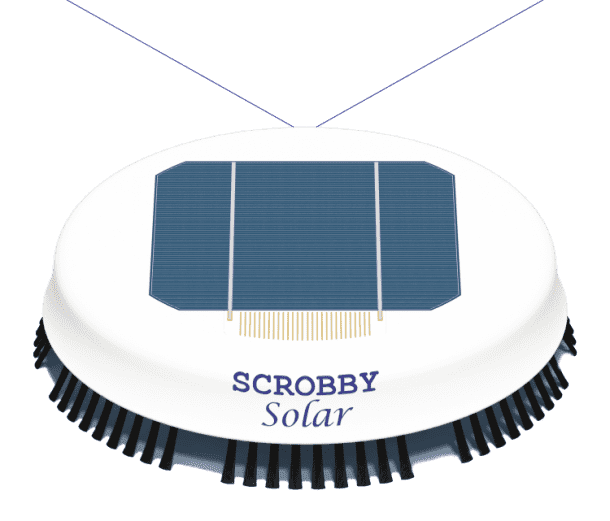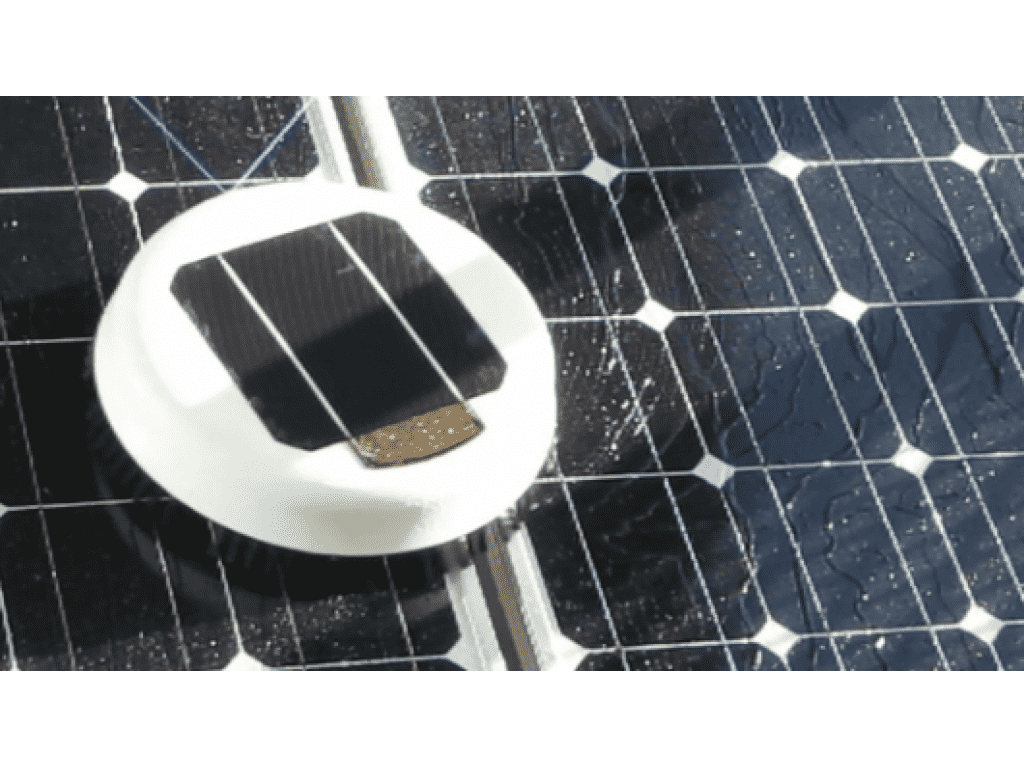Alternative energy is the talk of the day and perhaps, the one with the most potential so far is the solar energy. However, the problem with solar panels is that they require cleaning and scrubbing like regular windows in order to ensure they perform at an optimum efficiency level. This is where Scrobby comes in; it is a solar powered autonomous robotic prototype that has been designed to make sure that the domestic solar panels are kept clear and clean.
Scrobby has been designed to tackle solar panels positioned at angles that are up to 75 degrees whereas according to the manufacturers’, one unit is capable of cleaning a solar array that measures up to 32.5 x 65 ft. The limitation has been imposed because that’s only as far as the tethered wire will stretch. The wire tether has been incorporated into the design for safety purpose so that the robot doesn’t fall off from the roof resulting in damaging itself or hurting any passer-by.
Scrobby is given instruction via a smartphone/tablet app to which it also sends details of its schedule via Bluetooth 4.0. The creators asserted that once Scrobby is installed it will not require any external power or water for its operation. It makes use of a solar panel to charge the batteries and comes with a collector on its docking station that is used to collect rainwater. According to the standard setting, these are changeable by the user. Scrobby will complete full panel cleaning 3 times a year. This is considered to be an adequate amount in normal conditions. However, the user can change this situation whenever they want. Scrobby has been designed for the domestic market.
Scrobby raised funds via Kickstarter where a pledge of $348 ensured you a Scrobby assembly kit with delivery expected in February 2015. The retail kit will be launched in May 2015 with a price tag of $3,092 for 10 units. It will only be available in white color so as to minimize the heat stresses on the components.
Watch this video for more!

